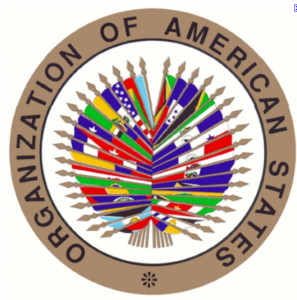Excerpt from OAS mission press release, December 8, 2010
“. . . These results flow from the operations of the Vote Tabulation Centre where JEOM observers, as well as other international and national observers, were able to monitor closely the verification procedures undertaken in accordance with the Electoral Law. A number of tally sheets (procès verbaux des résultats) not in conformity with the Electoral Law and which were irregular or displayed evident signs of fraud were set aside and not tabulated in order to ensure the integrity of the preliminary results.”
Click here for full text of release.
The above passage documents the OAS mission’s close involvement in the process that led to the quarantine of 38,337 of Célestin votes “which were irregular or displayed evident signs of fraud” and the inclusion in the published results of 14,408 more bearing the same characteristics, i.e. unrealistically high proportion of votes per BV to a single candidate. See Haiti Democracy Project Electoral Mission report,”Dissecting the Célestin Vote,” December 21, 2010.
In none of its statements does the OAS mission specify the criteria or cutoff point used to disqualify the 38,337 votes and qualify the 14,408. The qualification of the 14,408 changed the outcome and precipitated a political crisis that paralyzed the country for days.
In all its statements and press releases the OAS mission has failed to provide specificity about its operations, instead offering vague assurances of “able to monitor closely” or “ensure the integrity” of the results. These phrases do not explain how it let through over fourteen thousand results that displayed evident signs of fraud.
The OAS mission has also given no sign that it has compared the purported results with the independent record that exists in the form of carbon copies of the polling stations’ official returns (procès-verbaux) given out to party poll watchers and also retained locally and regionally by instances of the electoral commission. For an example of such a comparison, see the Haiti Democracy Project Electoral Mission report,”How the Fraud Was Done,” December 17, 2010.
If the OAS mission has indeed failed to make this comparison, it is ignoring an invaluable body of evidence that could corroborate or refute the officially-announced results.
The OAS mission’s performance so far has failed to meet professional standards of neutral electoral observation and transparency. The OAS secretary-general’s pronouncement in August that the electoral commission was fully credible displayed a bias and a failure to take into account the serious indications of the commission’s subordination to President Préval.
There is also a serious conflict of interests since the OAS has been deeply involved since 2005 in aiding and advising the Haitian electoral apparatus and has now assumed the role of judging its own handiwork.
The OAS’s approval of these doubtful votes, its slighting of the need for an independent electoral commission, and its failure to provide any meaningful information on the election three weeks later throws into question its qualifications to continue its observation mission.
